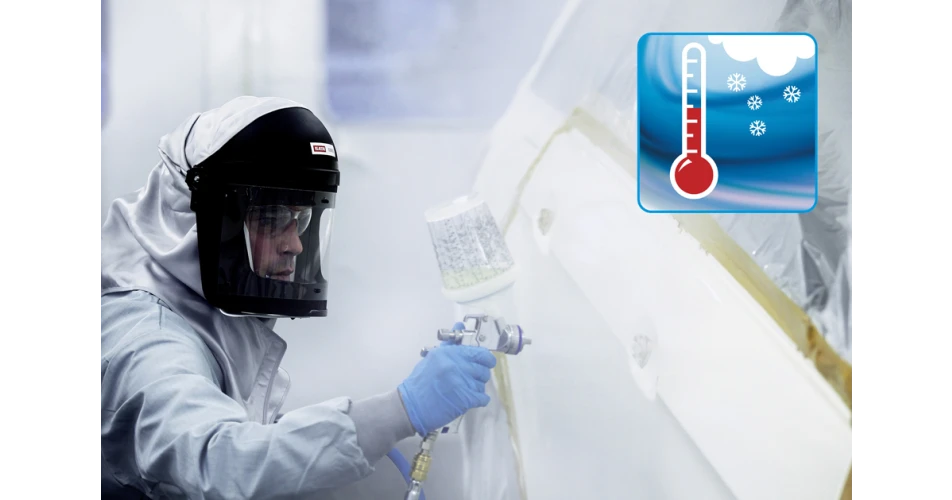Refinish paint manufacturer Standox has issued some practical tips to assist refinishers in maintaining job quality over the cold winter months.
Standox says that experienced refinishers are aware that when the temperature drops, refinish preparation work needs to be adapted accordingly. Lower temperatures can render clearcoats and hardeners more viscous, and that makes them much harder to work with. Kevin Welling, Training Academy Manager for Standox offers four useful tips on how to achieve good refinish results in winter.
Tip 1: The ideal temperature Temperature plays a critical role in many chemical processes and refinishing is no exception. Refinishers therefore need to pay particular attention to it in cold winter months. Kevin says, “Standox products are pretty robust. And up to a point, they are quite forgiving of environments that are not ideal. Nonetheless, bodyshops should ensure certain minimal conditions are met to make sure they achieve professional results, even in winter. When storing or working with VOC compliant clearcoats in particular, temperatures should not be allowed to drop below 20°C. This simple precaution can ensure optimal viscosity and sprayability. It is imperative that water-based products be protected against frost.”
Tip 2: Don’t over-dilute cold paint Kevin points out, “If a paint product seems thicker than usual during mixing, check its temperature and possibly also its viscosity. In most cases, the problem is that the paint is simply too cold.” He warns against additional dilution of the product with extra thinner. “That would be the wrong thing to do and could lead to subsequent defects such as orange peel effect.” He also says attempting to rectify this with further coats of paint generally doesn’t work and can actually make matters worse causing bubbles and sagging.
Tip 3: Bring vehicles into the heated spray booth Temperature is not only relevant for paint products and components, but also for car bodies which should not be allowed to get too cold. If they do, a fine moisture film can develop on the surface as the vehicle warms up. This can create problems with the flow, surface wetting and adhesion of the fresh paint and can lead to long-term defects such as blistering. This kind of moisture layer can make a superior result almost impossible to achieve. Kevin advises, “Allow the vehicle to stand in the heated spray booth for some time before starting work.”
Tip 4: Careful cleaning of the car body is crucial Kevin is also keen to point out one other important factor that should be considered in winter, that of salt residue on the car body. It can cause troublesome paint defects, such as blistering, that might then require elaborate reworking. Such defects can only be avoided if particular care is taken when cleaning body parts. He says, “The work is worth it. Time spent on cleaning the car body pays off later in terms of the quality and longevity of the refinish job.” He adds, “Salt residues, incidentally, only dissolve in water, so they should be removed with a water-based silicone remover.”
